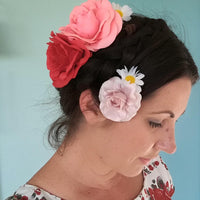
The History of Wax Seals - From Ancient Egypt to Today
Rebecca KellyShare
In Short:
What is the historical use of wax seals?
In the centuries before passwords, wax seals and silk ribbons were used to verify the security of important documents, sensitive information and to confirm identity. Delicate silk ribbons would be woven through slits made in parchment documents, and then sealed over with wax seals. The wax seals of the time were designed to be broken only upon opening. This helped to ensure that documents remained secure, as any tampering would be evident with damage to the paper, ribbon or brittle wax seals. Wax seal designs were highly intricate and unique to the user, making them difficult to replicate and were used to verify the identity of the sender.

When were wax seals invented?
The practice of using seals dates back to ancient civilizations such as Rome, Greece, and Egypt. A version of wax seals was used by Egyptians as early as 2000BC. These early examples of seals were typically made from clay or stone and were used to identify ownership or to mark important documents. The ancient Egyptians used mud or clay with their seals to make an impression in, instead of sealing wax. The seals were typically a roll style of seal rather than the press on seals we commonly see today.
Further early examples of seals were used in the China during the Han Dynasty (206 B.C to 220 A.D). Initially exclusively used by the Emperor and his officials, the seals were carved from jade or bronze.

Why were seals used in ancient times?
During the Middle Ages, the use of wax seals became more widespread in Europe. These seals were typically made from beeswax and were imprinted with a signet ring or other symbol to identify the person or organization that was using the seal. Initially used by bishops, monarchs and the royal court, the use of wax seals was soon adopted into mainstream use, with many individuals possessing their own unique wax seal to use when signing or sealing legal documents. Wax seals were also used to secure letters and other documents, as the sealing wax would break if the document was tampered with.
In the 17th and 18th centuries, the use of wax seals became even more popular. Seals were used to authenticate important documents such as wills, deeds, and contracts. These seals were often made from elaborate designs and were used as a symbol of prestige and power. Wax seal stamps were crafted into various forms including signet rings, fobs, portable wax seals for officials on the go, and highly elaborate desktop wax seals. Some wax seal designs were even etched into large semi-precious stones or made into miniature desktop wax seals that were disguised as porcelain ornaments.

Were wax seals used in the Victorian Era?
Wax seals were a popular way to seal general letters and correspondence during this time. Prior to the beginning of the 19th century, not only was paper was very expensive, but postal fees were calculated on the number of sheets of paper within the letter, making an envelope an expensive addition. Most letters were simply folded and secured with a wax seal and sent on their way.
When did wax seals stop being used?
During the 19th century, the use of wax seals began to decline as new methods of authentication were developed. By the late 19th century pre-gummed envelopes were widely available, further contributing to the move away from the use of wax seals. However, the use of wax seals continued in certain industries such as law and government. Even today, some legal documents still require the use of a wax seal to be considered valid.

What are wax seals used for today?
Wax seals have a long and meaningful history and despite modern conveniences, the aesthetic appeal of wax seals is now stronger than ever. The time-honoured art of wax sealing has experienced a resurgence in recent years as a nostalgic, decorative element. Wax seals are often used to add a personal touch to wedding invitations, greeting cards, gift wrap and other correspondence. The quality and availability of modern sealing wax products has made wax sealing more widely accessible to the public, and a desirable addition to stationery.

REFERENCES:
Formichella, J. Letter Seals: A history (n,d). Recollections. https://recollections.biz/blog/letter-seals-a-history/
Kratz, J. Holding It Together: Before Passwords—Ribbons and Seals for Document Security. 14/10/2021. National Archives: Pieces of History. https://prologue.blogs.archives.gov/2021/10/14/holding-it-together-before-passwords-ribbons-and-seals-for-document-security/
Donaldson, J. The History of Wax Seals (n.d). Hankering for History. https://hankeringforhistory.com/the-history-of-wax-seals/
Chiu-yuan, Y. The Lore of Chinese Seals. 29/3/2012. China Heritage Quarterly. http://chinaheritagequarterly.org/tien-hsia.php?searchterm=029_yeh.inc&issue=029

